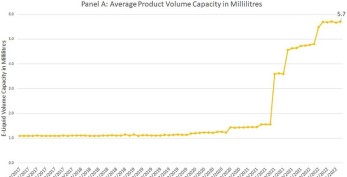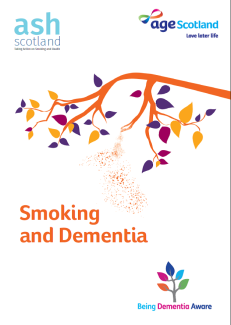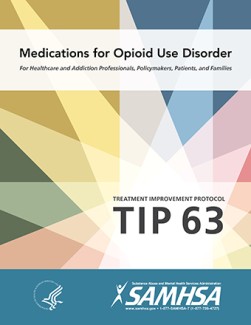Search
Public Health
The intersection of substance use with broader public health concerns.
Tratamiento de tabaquismo intenso después de un infarto agudo de miocardio
Resumen
El tabaquismo es una enfermedad crónica que afecta a una quinta parte de nuestra población. No obstante, la mayoría de los fumadores no busca tratamiento de su enfermedad ni la considera tal. Algunos pacientes logran controlar la...
Cue-Induced Brain Activation in Chronic Ketamine-Dependent Subjects, Cigarette Smokers, and Healthy Controls
Background: Observations of drug-related cues may induce craving in drug-dependent patients, prompting compulsive drug-seeking behavior. Sexual dysfunction is common in drug users. The aim of the study was to examine regional brain...
Genomic and Bioinformatics Approaches for Analysis of Genes Associated with Cancer Risks Following Exposure to Tobacco Smoking
Cancer is a significant health problem in the Middle East and global population. It is well established that there is a direct link between tobacco smoking and cancer, which will continue to pose a significant threat to human health. The...
A Web-Based Toolkit to Provide Evidence-Based Resources about Crystal Methamphetamine for the Australian Community
ABSTRACT
Background: The use of crystal methamphetamine (ice) and the associated harms for individuals, families, and communities across Australia has been the subject of growing concern in recent years. The provision of easily accessible...
The Proportion of Dementia Attributable to Common Modifiable Lifestyle Factors in Barbados
Abstract
Objective: To understand what number and proportion of dementia cases in Barbados are attributable to modifiable lifestyle factors and what effect a reduction in these risk factors would have on future dementia prevalence.
Method...
Identifying Viable Theoretical Frameworks with Essential Parameters for Real-Time and Real World Alcohol Craving Research
Abstract
Background: Substance use is known to be episodic, dynamic, complex, and highly influenced by the environment, therefore a situational and momentary focus to alcohol craving research is appropriate. Current advances in mobile and...
Factors That Make Thai Teenagers Drink Alcohol
Abstract
Thailand teenagers currently have more alcohol consumption habits. Especially in the younger age group, which the government has banned the sales of alcohol to children under 18 years old. However, the legislation was not...
Diagnosis of Stroke Due to Cocaine and Its Complications
Introduction: Cocaine is an independent cerebrovascular risk factor both for ischaemic and haemorrhagic events, above all among persons under 55 years of age.
Report: A case report of stroke due to the consumption of cocaine is used to...
The Restriction of Hours, Sales and Liquors: Lima 2010-17: Traffic Accidents (TA) and other Violent Deaths
Abstract
Objective: Determine the relationship between the hours of sale of spirits "Safe Time" and those killed by traffic accidents (TA).
Material and Methods: Descriptive research based on the monthly report made by the Metropolitan...
How Do People with Mood and Anxiety Disorders Perceive and Interpret the Drinking Motives Questionnaire?
Abstract
Background
Research has identified drinking motives as the final common pathway to alcohol use, and associations between specific drinking motives and drinking patterns have consistently been demonstrated. Data on drinking...
Association of Low Blood Pressure with Suicidal Ideation
Abstract
Background
Whether constitutional low blood pressure (BP) causes substantive health problems has been controversial, and subjects with hypotension exhibit a range of symptoms, from mild typical conditions such as tiredness and...
Smoking and Dementia
Introduction
Dementia is a set of symptoms associated with an ongoing decline of the brain and its abilities. This can include problems with memory loss, thinking, mental agility, language and understanding. Dementia is common – around 90...
Prevalence and Factors Associated with Exposure to Secondhand Smoke (SHS) among Young People
Abstract
Background: Annually, 600 000 deaths are attributed to exposure of non-smokers to secondhand smoke (SHS). These include 165 000 among children, about 60% of which occur in Africa and Southeast Asia. As of 2017, only seven...
The Association between Smoking and Electronic Cigarette Use in a Cohort of Young People
Abstract
Purpose
Electronic cigarette (e-cigarette) use is associated with smoking initiation among young people; however, it is also possible that smoking is associated with e-cigarette initiation. This study explores these associations...
Stressful Experiences Affect Likelihood of Remission of Drug Dependence, Continued Drug Use, and Relapse
Researchers at the University of Michigan’s Centre for the Study of Drugs, Alcohol, Smoking and Health have been exploring the link between drug dependence, ongoing drug use, relapse and exposure to stress or experience of stressful events...
Treatment for Opioid Use and Outcomes in Older Adults: A Systematic Literature Review
A new study published in the Drug and Alcohol Dependence journal focuses on an often-neglected topic – opioid use in older adults. This systematic literature review, Treatment for Opioid Use and Outcomes in Older Adults, included 76 papers...
NIDA Scientists Review Impact of Smoking among Adolescents with ADHD
Research Suggests Changes to the Way Opioids Are Prescribed after Surgery Could Prevent Misuse
A team of researchers from Harvard Medical School in Boston has published a new study suggesting changes to the way opioids are prescribed after surgery could be a way to reduce misuse.
Featured in the British Medical Journal, the study Po...
New from SAMHSA: Medications for Opioid Use Disorders
Dissemination and Implementation in Health for Researchers and Practitioners
Closing the gap between research discovery and clinical and community practice is essential if we are to succeed in improving our nation’s health.
Understanding how best to disseminate and implement evidence-based healthcare and prevention...
Share the Knowledge: ISSUP members can post in the Knowledge Share – Sign in or become a member





